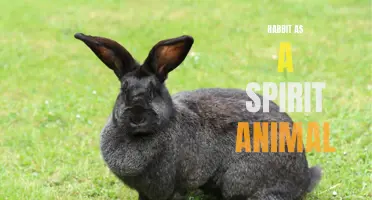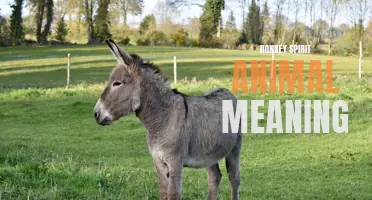
Descartes, the renowned philosopher, is widely known for his contributions to the field of metaphysics, mathematics, and philosophy. But did you know that he also had a theory about animal spirits? In the 17th century, Descartes proposed that animals, including humans, have a specific type of matter within them called animal spirits. This theory not only challenged traditional beliefs about the soul but also revolutionized the way we think about the mind and body connection. In this article, we will explore Descartes' theory of animal spirits and discover its impact on modern science.
| Characteristics | Values |
|---|---|
| Definition | Vital fluids responsible for communication between mind and body |
| Location | Pineal gland |
| Function | Transmit information from sensory organs to brain and from brain to muscles |
| Nature | Immaterial and fluid-like |
| Involvement | Responsible for movement, sensation, memory, and emotions |
| Dualism | Serve as connection between immaterial mind and material body |
| Role in disease | Imbalance can cause mental and physical health issues |
| Scientific validity | Disproved by modern neuroscience and physiology |
What You'll Learn
- What are Descartes' animal spirits, and how do they fit into his philosophy of mind?
- How does Descartes explain the relationship between the mind and body, and how do animal spirits factor into this relationship?
- In Descartes' view, how do animal spirits enable voluntary bodily movements and sensory perception in humans?
- Critics of Descartes' theory have pointed out various inconsistencies and limitations. What are some of the main objections to his concept of animal spirits?
- How has scientific research since Descartes' time challenged or supported his ideas about animal spirits and the mind-body connection?

What are Descartes' animal spirits, and how do they fit into his philosophy of mind?
René Descartes, one of the most influential philosophers of the 17th century, is famous for his theory of mind-body dualism. According to him, the mind (or soul) and the body are two distinct substances that interact through the pineal gland in the brain.
However, what many people fail to realize is that Descartes’ theory of mind also includes a concept called “animal spirits.” In this article, we will explore what animal spirits are and how they fit into Descartes’s philosophy of mind.
Animal spirits refer to a type of fluid that Descartes believed was responsible for transmitting messages from the brain to the muscles. According to his theory, every time we think or feel something, the pineal gland releases animal spirits that flow through the body via the nerves and cause muscle movements.
Descartes believed that animal spirits were a type of “subtle matter” that was more refined than ordinary matter but less so than the soul. He saw animal spirits as a link between the physical and the mental, as they allowed the mind to interact with the body in a material way.
Descartes believed that the mind and body were separate but closely connected. He argued that the mind could influence the body, and vice versa, through the pineal gland. However, he also realized that there had to be some kind of mechanism that allowed the mind to communicate with the body in a material way.
For Descartes, animal spirits were this mechanism. By transmitting messages through the nerves, they allowed the mind to control the body. Descartes also believed that animal spirits could be affected by emotions, which could impact the body’s movements.
In this way, animal spirits played a crucial role in Descartes’s theory of mind-body interaction. They allowed him to explain how mental processes such as thought and emotion could have physical effects on the body, without denying the fundamental separation between the mind and body.
Criticism of Descartes’s Theory of Animal Spirits
While Descartes’s theory of animal spirits was influential in his time, it has been criticized by modern philosophers and scientists. One key criticism is that there is no evidence for the existence of animal spirits, and that they are a purely speculative concept.
Furthermore, even if animal spirits did exist, it is unclear how they could transmit messages so quickly and accurately through the nerves. This is a problem known as the “binding problem,” which has yet to be fully solved by neuroscience.
Overall, Descartes’s theory of animal spirits was an important part of his philosophy of mind. It allowed him to explain how mental processes could interact with the physical world, without denying the fundamental separation between mind and body. While his theory has been challenged by modern science, it remains an important part of the history of philosophy and neuroscience.
Exploring the Mystical World of Mayan Spirit Animals
You may want to see also

How does Descartes explain the relationship between the mind and body, and how do animal spirits factor into this relationship?
René Descartes, a prominent French philosopher, mathematician and scientist in the 17th century, is famous for his dualist theory that states that the mind and body are separate entities and are distinct in nature. In his theory, he explains the relationship between the mind and body, and the role of animal spirits in mediating this relationship.
Descartes believed that the mind or soul is a non-physical entity that is eternal, immutable and indivisible. According to him, the mind is responsible for our thoughts, emotions, perceptions and consciousness. On the other hand, the body is a physical entity that is subject to the laws of physics and is responsible for our movements and sensations. Descartes believed that the mind and body interact with each other, but they are not the same thing.
To explain how the mind and body communicate with each other, Descartes introduced the concept of "animal spirits". According to him, these spirits are a kind of ethereal substance that flows through the nervous system and acts as a mediator between the mind and body. The animal spirits help to transmit messages from the sensory organs to the brain and from the brain to the muscles, thus enabling us to perceive and act upon our environment.
Descartes believed that the pineal gland in the brain is the seat of the soul and is where the animal spirits converge. He also believed that emotions are caused by the movements of the spirits in the brain, and that some mental disorders are due to the imbalance of these spirits.
While Descartes' theory was groundbreaking at the time, modern scientists have largely dismissed his concept of animal spirits. Instead, they attribute the functions of perception, movement, emotion and cognition to the complex interactions among neurons, neurotransmitters and other biochemical processes in the brain and nervous system.
Overall, Descartes' theory of mind-body dualism and the role of animal spirits in mediating the relationship between the mind and body laid the groundwork for advances in neuroscience and psychology. However, it is important to note that his ideas on animal spirits have been superseded by modern scientific understanding.
The Majestic Narwhal: Your Enigmatic Spirit Animal
You may want to see also

In Descartes' view, how do animal spirits enable voluntary bodily movements and sensory perception in humans?
In Descartes’ view, the human body operates by way of animal spirits, which are a type of fluid that is responsible for both voluntary bodily movements and sensory perception. Descartes saw the human body as a type of machine that operates based on these spirits, and he believed that by understanding how they work, we could better understand how the body operates as a whole.
Animal spirits are a complex substance that is located in the body’s cavities and pores. According to Descartes, these spirits are created by the heart and then sent out to the rest of the body to enable movement and sensation. This process occurs through a series of tubes and nerves that exist throughout the body, and it is the flow of these spirits that enables the body to operate.
One of the key functions of animal spirits is to enable voluntary bodily movement. This occurs when the spirits flow through the nerves and muscles in the body, allowing us to move our arms, legs, and other body parts. Descartes believed that this process was entirely automatic, and that humans did not need to consciously think about moving their bodies in order for it to occur.
Another important function of animal spirits is to enable sensory perception. This occurs when the spirits flow through the body’s sensory organs, allowing us to see, hear, touch, taste, and smell the world around us. Descartes believed that this process was also automatic, and that humans did not need to consciously think about sensing the world in order for it to occur.
Despite his belief in the automatic nature of animal spirits, Descartes did acknowledge that they could be influenced by external factors. For example, he believed that strong emotions could affect the flow of spirits in the body, causing us to feel physical sensations such as tightness in the chest or butterflies in the stomach.
Overall, Descartes saw animal spirits as the key to human bodily movement and sensory perception. By understanding how they work, we can gain a better understanding of the intricacies of the human body and how it operates on a day-to-day basis.
Bumble Bee: Symbolism and Meaning as a Spirit Animal
You may want to see also

Critics of Descartes' theory have pointed out various inconsistencies and limitations. What are some of the main objections to his concept of animal spirits?
Rene Descartes, the French philosopher and mathematician, proposed a theory of "animal spirits" in the 17th century to explain how the body and mind are connected. According to this theory, the brain produces a "vital spirit" that flows through the nerves and into the muscles, allowing for movement and sensation.
However, critics of Descartes' theory have pointed out various inconsistencies and limitations, particularly with his concept of animal spirits. Here are some of the main objections:
- Lack of Evidence: There is no direct evidence to support Descartes' theory of animal spirits. While he believed that these spirits were responsible for movement and sensation, there is no empirical evidence to back up this claim. In fact, modern neuroscience suggests that movement and sensation are governed by complex interactions between the brain, spinal cord, and nervous system.
- Oversimplified Explanation: Descartes' theory of animal spirits oversimplifies the way the body and mind interact. This theory suggests that the brain is in complete control of the body, and that animal spirits are solely responsible for movement and sensation. However, this overlooks the complex feedback loops that exist between the body and the brain.
- Limited Scope: Descartes' theory of animal spirits is limited in its scope, as it only accounts for the movement and sensation of the body. It doesn't account for other important bodily functions, such as digestion, respiration, or the regulation of body temperature.
- Underestimating the Role of the Body: Descartes' theory of animal spirits underestimates the role that the body plays in cognition and perception. He believed that the mind exists independently of the body, and that sensory information is transmitted to the brain by the animal spirits. However, modern research suggests that the body plays a key role in shaping perception, with sensory information being interpreted in the context of bodily sensations.
In conclusion, critics of Descartes' theory have pointed out various inconsistencies and limitations, particularly with his concept of animal spirits. While this theory was groundbreaking in its time, modern neuroscience has advanced our understanding of the body and mind, revealing that the interactions between the brain and body are far more complex than Descartes ever imagined.
Uncovering the Power and Wisdom of the Centipede Spirit Animal
You may want to see also

How has scientific research since Descartes' time challenged or supported his ideas about animal spirits and the mind-body connection?
Since the time of René Descartes, scientific research has come a long way in the field of understanding the mind and body connection. Descartes, a French philosopher and mathematician, hypothesized that the mind and body were separate entities that were connected by a fluid called animal spirits. However, modern science has challenged and expanded on Descartes' ideas, leading to a better understanding of the intricate relationship between the mind and body.
One of the most significant challenges to Descartes' theory came with the discovery of neurons and their function in the nervous system. Neuroscientists have found that neurons are responsible for transmitting information throughout the body, including the brain. This suggests that the mind and body are more closely linked than Descartes had previously believed. Additionally, recent advances in brain imaging technology have allowed researchers to explore the different regions of the brain and how they relate to cognitive processes and behavior.
Another key area of research that has challenged Descartes' theory is the study of psychosomatic disorders. These are illnesses that have both physical and psychological symptoms and are believed to be caused by stress or other psychological factors. The fact that these disorders can cause physical symptoms demonstrates that the mind and body are connected in ways that Descartes could not have predicted.
There have also been advancements in the understanding of the placebo effect, which is when a placebo treatment can elicit a clinical response in a patient. This phenomenon is thought to be caused by the brain's ability to create self-healing mechanisms, which illustrates the interconnectivity between the mind and body.
Furthermore, research has revealed that our emotional state can have a significant impact on our physical health. For instance, stress and anxiety are linked to an increased risk of developing chronic diseases, such as heart disease, diabetes, and cancer. Studies have also shown that mindfulness practices, such as meditation, can promote physical wellness by reducing stress and inflammation.
In conclusion, scientific research has challenged and supported Descartes' ideas about the mind-body connection since his time. Advances in neuroscience, psychosomatic research, and placebo studies have highlighted the intricate relationship between the mind and body. Additionally, research on the impact of emotional health on physical well-being further reinforces the crucial link between the two. Overall, modern science has led to a far more in-depth understanding of the complex ways in which the mind and body are connected, far surpassing Descartes' animal spirits theory.
Discovering January's Spirit Animal: Unleashing Inner Strength
You may want to see also
Frequently asked questions
Descartes' animal spirits are a hypothetical substance that he believed to be responsible for physiological processes in humans and animals, including movement, sensation, and perception.
Descartes characterized animal spirits as a type of fluid that traveled through hollow nerves and interacted with the brain, allowing for the transfer of sensory information and motor control.
Descartes' theory lacked empirical evidence and was eventually disproven by advances in neuroscience and physiology. However, his ideas influenced later thinkers and were a significant contribution to the history of science.
Descartes' theory of animal spirits contributed to his broader philosophy of mind-body dualism, which posited that the mind and body were separate entities. This perspective shaped philosophical debate for centuries, and his ideas remain influential today.




















5 Comments
Cassius Gutierrez
Edgar Singh
Kryms Kaya
AuthorMarilyn Best
Anjana Sahney Thakker
Author